Having a web presence is not a luxury but a necessity in today’s world that is connected through the internet. It is a common question that people and companies ask themselves: how to make your own website? The purpose of this article from Designveloper is to help you navigate through the process, pay attention to ten of the best website builders that can help you start your journey online.
In this article, you will find out the most recent data and information regarding web building so that you can have a good grasp of the topic. Every point will be supported by reliable reports and data so that you will have the most relevant and recent information at your disposal.
In the course of the article, we will give examples of how each website builder works and what results can be achieved. The above examples will help you to understand what you can do when you have the knowledge on how to create your own website.
Choosing the Right Types of Your Websites
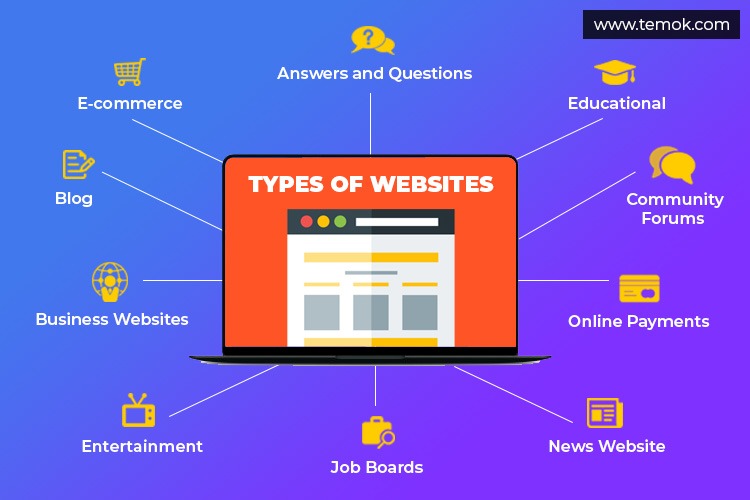
Every website out there has a purpose and a function. Understanding the different types of web pages you create will help you determine the best strategy for each project. For instance, if you’re a blogger, you don’t have to create several websites for each post. You can use the same template, just change the text around.
1. Landing page website
A landing page is your physical representation of your website. In a nutshell, it is a website that a person downloads when they first land on your site. A lot of marketers and business owners write off landing pages as “junk,” but, in reality, landing pages are a great way to convert visitors and get them to your website or to fill out a form. To find the right type for your business, your landing page will need to be:
- Easy to navigate
- Convenient to use
- Make your visitor feel like they’re doing something important
- You should also look for landing page typography to ensure your visitors don’t need to read the entire page.
2. Magazine website
This is probably the most famous type of website. Similar to a traditional magazine, this is a digital publication that contains an assortment of articles and videos. These websites are perfect for lifestyle and business purposes, as they cover a wide variety of content. They are a great platform to share links, articles, and images with friends and family. What is a bulletin board? Bibliography websites are essentially web versions of the catalogs you can find in brick-and-mortar stores. While catalogs typically focus on a particular industry or hobby, bibliographic websites focus on topics like culture, history, health, and economics. By browsing different bibliographic websites, you can discover everything from top designers to must-read blogs and journals.
3. eCommerce website

An e-commerce website helps you sell products and offers a web store. It’s a fantastic way to expand your customer base. It’s also easy to set up and most will give you full control over your products. Ecommerce sites are also used to sell services, events, and products.
It helps customers buy your products through a secure online purchase process. If your e-commerce site is easy to use, then you’ll be selling a lot of products.
How to set one up? There are three main ways to set up an online store. You can set up your site on your own, using a custom development company, or by enlisting the services of a web store designer. You’ll find web store designers in any local business center.
4. Blog website
A blog website is essentially a blog that covers a variety of topics. Although the blog can cover a variety of topics, the content is usually one or two posts per month. In the early days of blogging, the format was to post an item for each day, but now the posts are published in a monthly or weekly format, making the format less engaging. Blogs are not something that anyone new to the industry would have to learn, as their readers would already know the format, but the next step in branding is to tell a story, and to this end, a blog is not an option. A story-telling website is one of the most important features of any website. To attract the right traffic, a story-telling website should have the right picture, text, and design.
5. Portfolio website
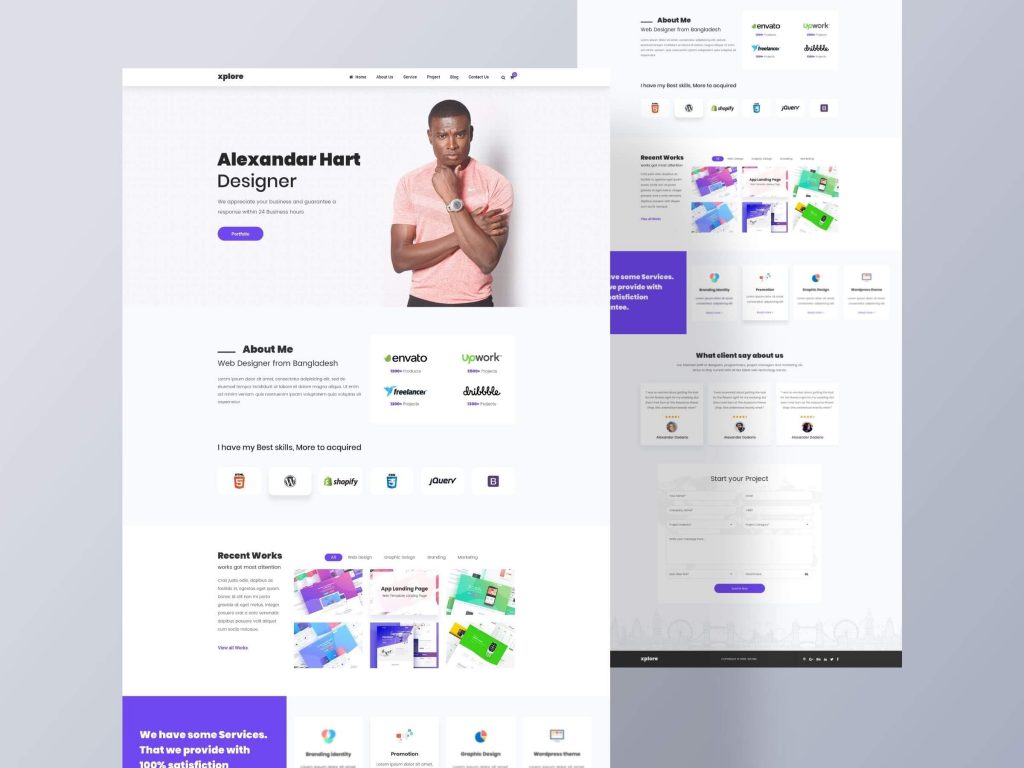
The most common form of website is the portfolio site, which is a digital portfolio that includes an overview of all your available work or a list of services provided. For example, if you’re a web designer, you might want to list your website design skills on your portfolio page, even if you’re only offering graphic design services on the side. This format can often also include links to your portfolio of websites and some form of advertising. Sometimes people will go as far as to build a portfolio website, with the intention of seeing how many people link to it. They may find that most visitors link to the portfolio of the most popular website, not their own.
6. Business website
For businesses, the form of a website can vary greatly. What’s more, it also depends on the industry. Your business, company, or product could be whatever it is you sell. You could be a small family business trying to be the go-to spot in the marketplace. Or, it could be an organization like the Chamber of Commerce or a franchise like Ikea or Pizza Hut. Therefore, a business website is a list of links, which can also be called pages or pages and sections. These are called websites or the desktop version of their page. It can also be called a website or a websites page. A website can also be made up of different pages. It will most likely contain sections of the website – the home, contact, product, blog, e-commerce, or another component.
7. Social media website

A social media website is a website that can be used by a business to interact with customers. Businesses can be on Instagram, Twitter, Facebook, LinkedIn, Pinterest, and other social media sites. The advantage of social media websites is that they are user-friendly and inexpensive. Most sites allow businesses to set up specific profiles that only a certain group of people will see. This makes your profiles more manageable and specific. That said, it is still important to be on all the social media websites you can. You can gain fans and customers through social media websites.
How to create a social media website? Creating a social media website takes more effort than many people think. There are many moving pieces to a successful social media website.
When do You need to Create a Free Website?
Free website creation can be crucial for a number of purposes. A frequently asked question that people and small businesses have is how to create a website. Below are some specific scenarios when you might need to create a free website.
Starting a New Business
New businesses require an online presence. A report shows that 97% of consumers use the internet to look for nearby businesses. Having a free website can be advantageous in that you can get the word out to potential customers without having to spend a lot of money.
Showcasing Your Portfolio
Freelancers and creative people require a place where they can showcase their portfolios. A free website builder is useful in the creation of an appealing portfolio for the client. For instance, photographers can use Wix or Weebly to post their best pictures of different events or products.
Blogging
If you have interest in writing then you can start a blog with a free website. Research shows that businesses that blog receive 55% more traffic to their websites. This statistic gives an indication of the potential of a well maintained blog.
Learning and Experimenting
Newcomers in web development can use free website builders for practice and to start with. Platforms like WordPress. com provide an opportunity to build websites in a trial mode and it does not cost anything.
Non-Profit Organizations
Non-profit organisations are usually financially constrained. A free website can assist them in delivering their message and getting to the donors. For instance, Google Sites can be employed in developing informative and interesting websites for non-profit organizations.
Event Promotion
Organizing an event? It is possible to create a website where all the information regarding the event is published for free. Event organizers can use Eventbrite to build a website with information about the event, registration forms, and others.
Personal Branding
Free website is useful for people who would like to create their own brand. Forbes has it that personal branding is essential in the current world. A good website design will assist you in making a niche in your area of specialization.
Educational Purposes
Teachers and educators can use free website to share their resources and information with the students. Google Classroom for instance works well with free website creators to make the development of education content easier.
Community Projects
Some of the common areas that community groups can take advantage of free websites include. For instance, a local sports team may create a free website where they post the team’s schedule, the results of the games and other related information that may be of interest to the team members and its supporters.
Temporary Projects
At other times, you require a website for a temporary purpose or for a specific event. Free website builders are ideal for creating websites that are not necessarily going to be permanent and therefore you do not have to spend any money on them.
Top 10 Website Builders for Making Your Own Website
Building a website is now easier than ever. Thanks to the website builders, it is possible to create a really good-looking website even if you don’t have any coding experience.
1. Wix
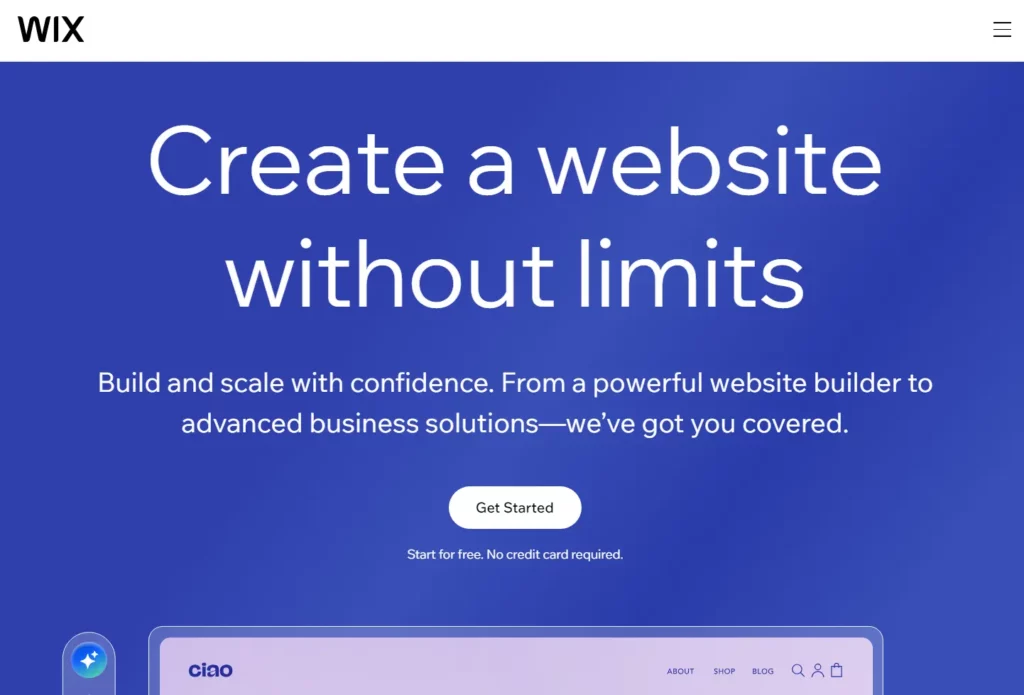
Wix is one of the most well-known website creation platforms. Currently, it is being used by more than 258 million users across the globe. This platform is available in 190 countries. It dominates the website builder market with a market share of almost 45% in 2024.
Wix is one of the platforms that provide a drag-and-drop feature. It also makes it easy for beginners to develop websites. There are more than 800 design templates available for the users. These templates can be adjusted according to the requirements of different users.
Wix has integrated SEO tools. These tools assist in enhancing the site’s visibility in the search engine listing. Users can also connect with more than 300 outside applications. This makes it possible to come up with additional functionalities such as online calendar and event reservation.
Wix is perfect for small business owners. It has relatively cheap plans with the cheapest plan going for as low as $16 per month. There is also a free version of the application with fewer options available to the users.
Wix has some limitations. Users are limited in their ability to modify templates after the site has been published. All plans have also storage limits. However, these are some of the drawbacks that Wix has despite the fact that it is still popular among many people.
2. Weebly
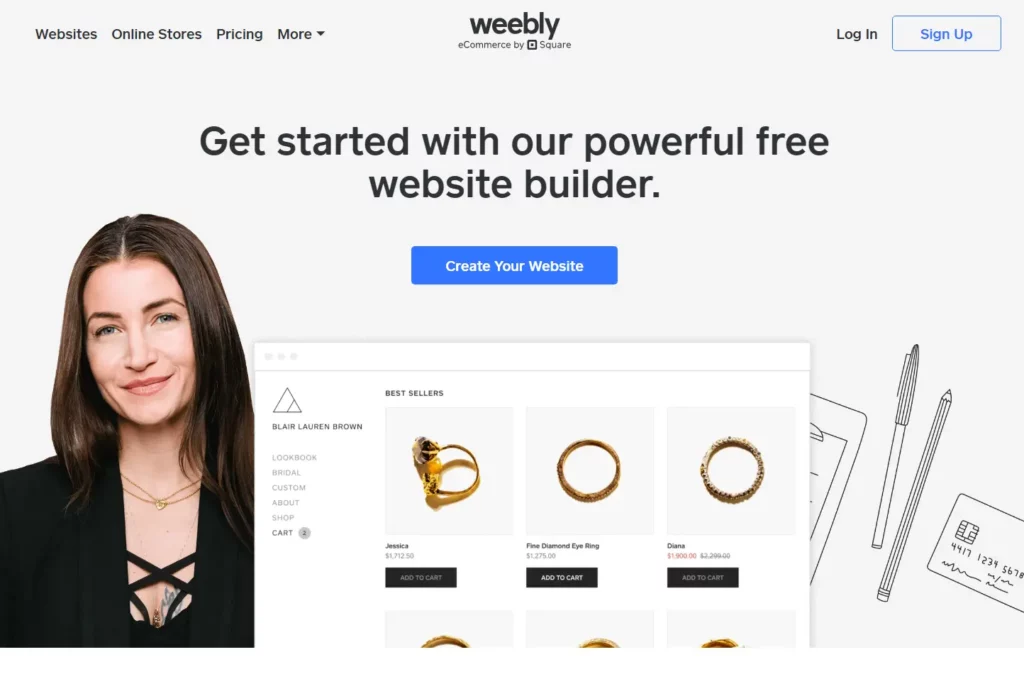
Weebly is one of the most well-known website builders, which is easy to use and relatively cheap. It is perfect for newbies who have no idea about coding and would want to build their own website. The platform has a simple drag and drop feature that allows one to build a good looking website in a short span of time.
Weebly’s pricing is competitive. It has a free plan and paid plans starting from $10 per month if paid yearly. This makes it an ideal option for those who are working to a fixed budget. Also, Weebly offers free hosting with unlimited storage and bandwidth for most of the plans it offers.
It also has e-commerce features which are also worth mentioning about Weebly. Customers are able to sell as many products as they want, automatically generate shipping labels, and send emails to customers who left their carts behind. This makes it a great choice for small businesses that want to create an online store.
However, there are some drawbacks for using Weebly. It has old-fashioned templates, and there is no possibility to customize it to the maximum. This can be a disadvantage for users who would wish to have more control over the looks of their site. In addition, Weebly lacks adequate marketing features that can help a business grow, which is a disadvantage.
3. WordPress
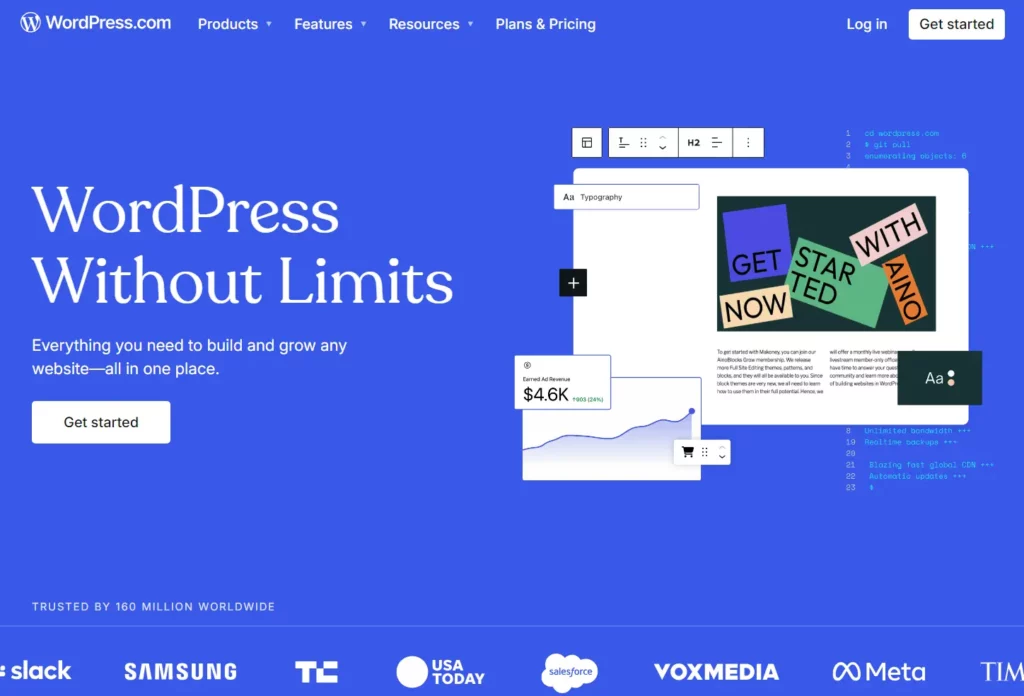
WordPress is a well known and highly effective website creation tool. Currently, it runs more than 43% of all the websites on the internet, and therefore it is the most popular CMS in the world.
WordPress has a lot of flexibility when it comes to its use. There are more than 9,000 free themes and 60,000 free plugins available to the users. This flexibility enables the users to design websites that are both personalized and meaningful.
Some of the big companies that have adopted WordPress for their websites are Sony Music, Time Magazine, Disney Books among others. These examples demonstrate the ability of the platform to work with high traffic websites.
WordPress is also user-friendly. It is easy to create professional websites even for those who do not know how to code. This is made easier by the platform’s drag-and-drop editors and the templates that are already provided.
Security is a very important factor in WordPress. However, it was found that more than 90% of hacked CMS websites in 2022 are using WordPress. This brings out the need to use security plugins such as Wordfence and Sucuri in the running of websites.
4. Squarespace
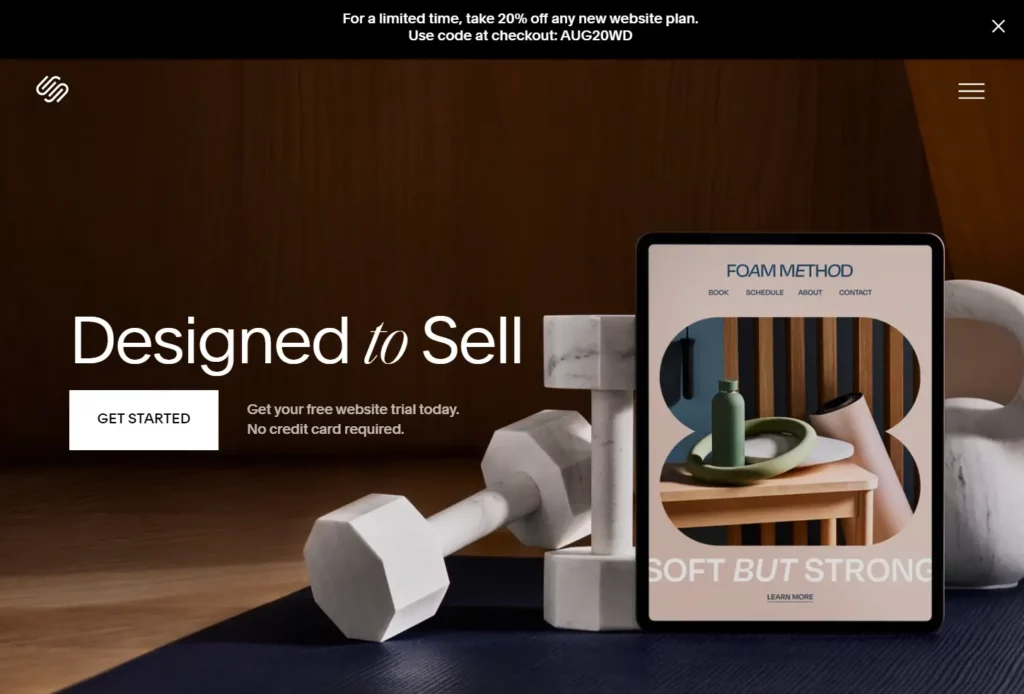
Squarespace is an example of website builders that are famous for their clean and modern layouts and easy to use platform. It is the second most used website builder in the world. To date, Squarespace is home to over 4.6 million unique subscriptions, which is 7% more than in the previous year. Currently, Squarespace is available in more than 200 countries and territories.
Squarespace generated $1.01 billion in revenue in 2023, up by 12% from 2022. Subscription is the major source of the platform’s revenue, contributing to 92% of the total revenue. Squarespace is the most used website builder in the United States, it accounts for 71.8% of the market share.
Another important aspect of Squarespace is a vast choice of templates available for use by the users. The software allows the users to select from different templates to make a good looking website. For instance, a small business owner can apply the “Brine” template for presenting his or her products and services. It also has integrated SEO features that enable the users to improve the ranking of their website on the search engines.
Another strength of Squarespace is the e-commerce facilities that it offers. It is a marketplace for creating online shops and selling products and services with the help of an inventory system. For the year 2023, the commerce revenue increased by 14% from the previous year and was equal to $75.5 million, which proves that the platform is highly effective in the sphere of e-commerce.
5. Strikingly
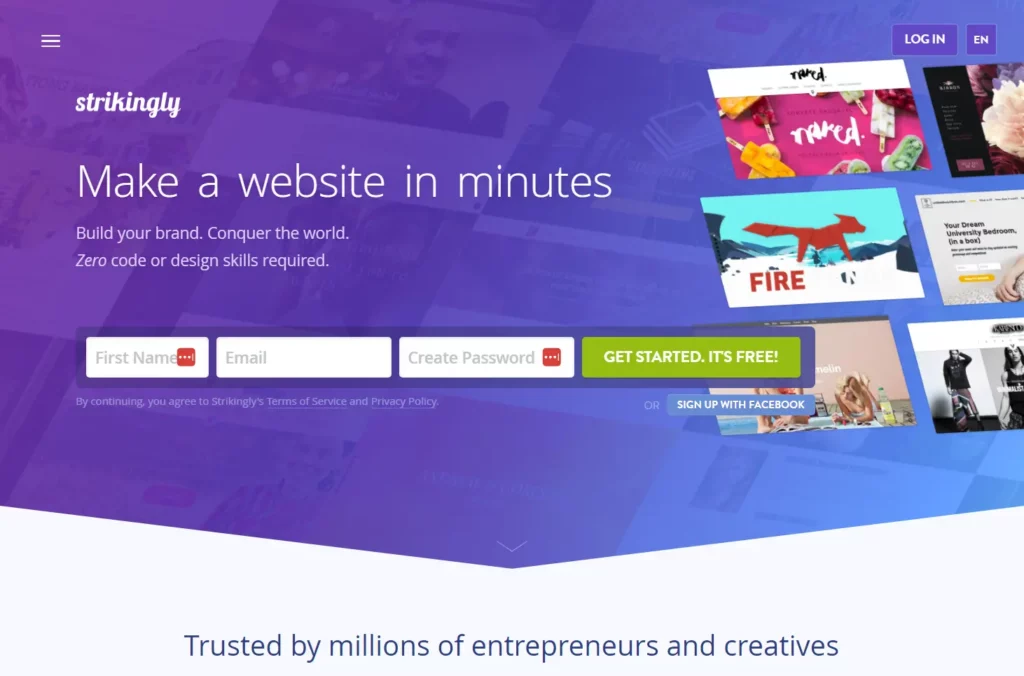
Strikingly is a very simple website builder, which is great for novices. The platform comes equipped with a drag and drop editor which makes it possible to design a website without the use of code.
Of course, Strikingly has a free version, and paid plans start at $8/month if you pay annually. This makes it affordable for small businesses to be involved in the supply of the products to the market. All plans come with e-commerce functionality, meaning that users can sell products online even with the basic plan which is free.
Strikingly’s templates are sleek, stylish, and optimized for mobile, so a website will look good on any device. Annual plans are also available with the first year of the domain being free of charge on the platform.
Another great feature is the Simple Store that enables the user to integrate e-commerce into their websites. Customers can use coupons, select the shipping method and payment methods, and this makes it easy to run an online store.
Website analytics are also provided by Strikingly to enable users monitor their website’s performance. It has components such as Simple Blog, social networking integration, and contact forms that assist the users in engaging their audience.
6. GoDaddy
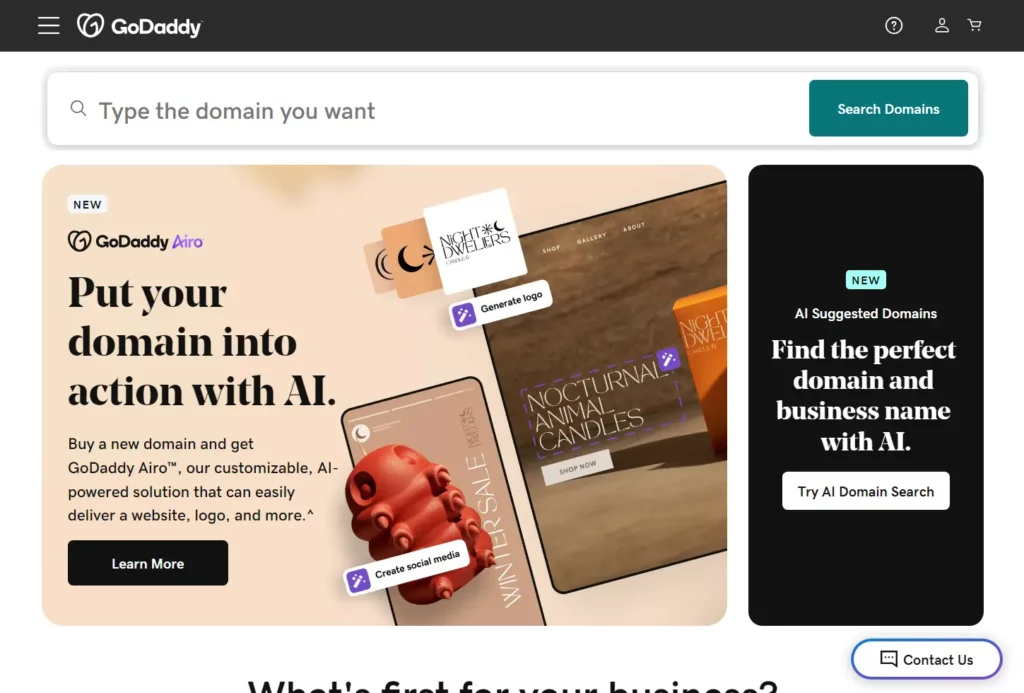
GoDaddy is one of the web hosting services that can be recommended for beginners who are going to build their own website. It provides web hosting services and an editor to design a website at the same place. The platform has been described as simple to use and cheap.
GoDaddy’s site builder is simple and easy to use and is ideal for novices. The platform includes a simple drag-and-drop editor and more than 100 of mobile-friendly templates. It is easy to create a website with GoDaddy’s help because after answering several questions, the Artificial Design Intelligence (ADI) will create an initial site design for the user to work on, and the user does not have to know how to code.
It also has integrated marketing tools which assist the users to promote their websites on the search engines and get traffic to the site. GoDaddy has a basic plan that is free of charge, thus suitable for those with a small amount of capital to invest. However, the free version comes with a GoDaddy logo on your site and domain.
The GoDaddy’s pricing plans are from free to $29.99 per month, and there is a free trial of 30 days to allow the users to explore the features of the platform. This makes GoDaddy one of the most affordable website builders for those who are still learning how to design their own site.
Another advantage of GoDaddy is that it offers customer support services that are available for round-the-clock phone and live chat. This makes it possible to have help whenever one feels like they need it.
Nevertheless, GoDaddy has some drawbacks. It has limited site design customization and e-commerce and some of the add-ons may be costly to some users.
7. LeadPages
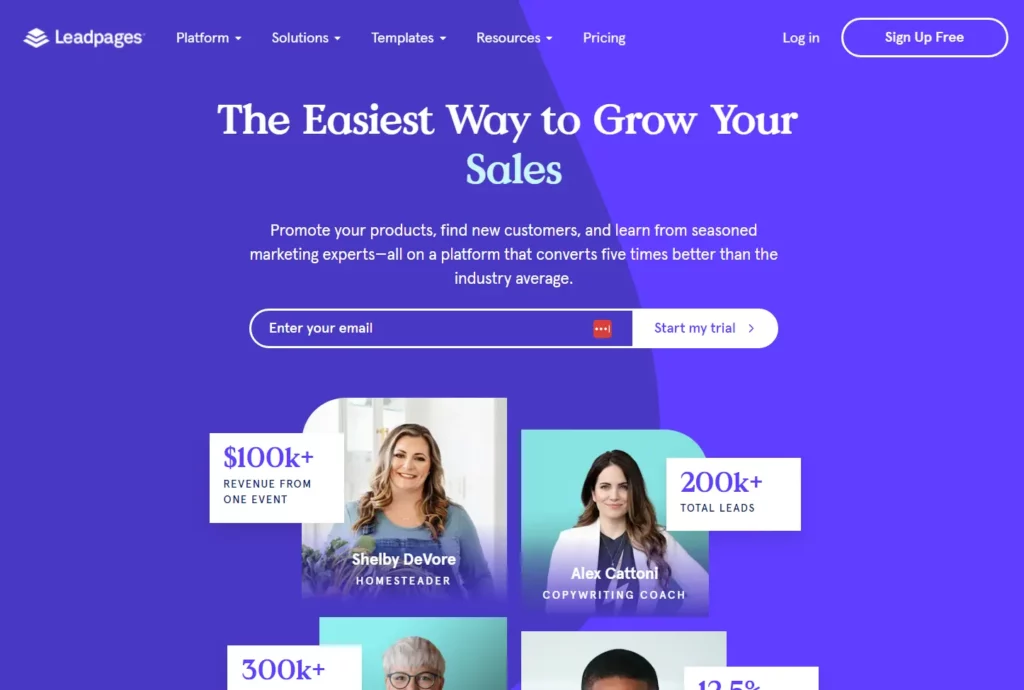
LeadPages is a very useful tool for creating high conversion rate websites. Originally, it was a landing page builder but now it is an all-in-one website builder aimed at assisting users in creating websites that sell.
LeadPages has a number of features such as landing pages, templates, conversion tools and optimization tools. It also includes an AI generator and blogging tools and enables users to build and edit the whole website, including all the pages, pop-ups, forms, and blog entries.
The most prominent feature of LeadPages is the templates that are created to capture the visitors’ attention and turn them into leads. LeadPages also stated that its templates can convert up to five times more than the industry standard for conversion rates, according to conversion data that has been collected over the last ten years.
LeadPages also has a drag-and-drop feature that enables users to build their templates without any difficulty. It is very easy to use and one does not need to have knowledge in coding to be able to edit the text, images and other elements.
Another important component is the conversion toolkit, which is opt-in forms, pop-ups, and alert bars. All these tools assist the users in generating leads and making sales. Further, sites created with LeadPages take 2.4 seconds quicker and have a performance that is 30% above the average.
LeadPages also has integrated SEO settings that can be used to enhance the website’s ranking on the search engine. This involves the use of meta descriptions and image optimizations in order to enhance the site visibility and increase traffic.
8. Oxygen
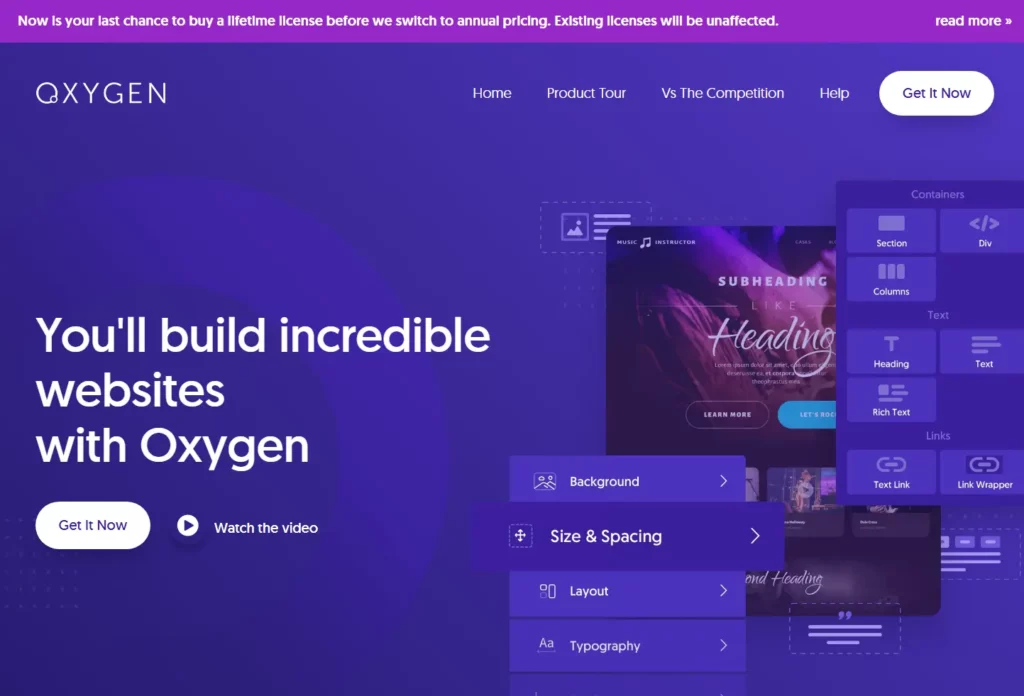
Oxygen is a great plugin for WordPress that enables the user to build whole websites from scratch without coding. Unlike other builders, it switches off the WordPress theme, which means that the users will be able to manage the look of the site on their own. This feature is perfect for those individuals who want to have full control over all aspects of their site.
Oxygen is also famous for its clean code output that is important for the fast work of the website and its SEO. Specifically, Oxygen has clean code that makes it to load faster and also to be easily ranked by the search engines.
The builder provides a great deal of flexibility, which means that the user can create headers, footers, and WooCommerce stores. It also supports integration with Advanced Custom Fields (ACF) that helps in creating dynamic content. Due to this flexibility, it is popular among developers.
However, Oxygen has a relatively high learning curve and therefore, the new users might find it hard to work with. However, once one gets a grip of it, it provides the best design tools that one can ever imagine. Even for beginners, a step by step tutorial of how to go about it can be of great help.
Oxygen’s pricing is reasonable, which is $99-$169 for a lifetime license, which is suitable for long-term projects. Also, the builder often provides cut-price deals, which make it even cheaper than it already is.
9. Webflow
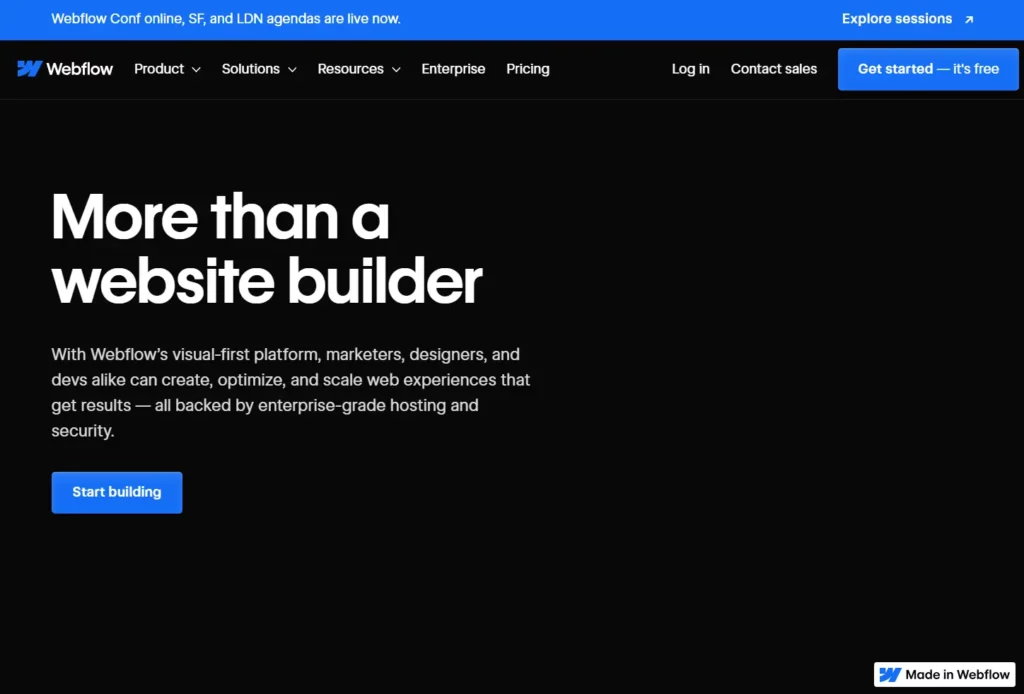
Webflow is an amazing website creation tool that can be used to create websites with a lot of customization. It is suitable for anyone who would wish to design a website from scratch without having to code. Webflow offers a free plan with limited features and paid plans starting from $14 per month, which is perfect for everyone.
Webflow can be seen as having a highly customizable design toolset. It is also flexible for users to implement parallax scrolling and animations and thus is suitable for designers who want complete control over the look of their site.
Webflow has many benefits and one of them is a no-code site editor that enables users to build their websites without coding skills. Also, Webflow has features that enable it to support e-commerce, thus making it ideal for use in online stores. It has no transaction fee on some of the plans, which is an advantage for the e-commerce business.
Webflow also offers a number of templates for those who want to start with the platform as soon as possible. Currently, there are more than 400 templates which can be used for different industries and personal design preferences. This makes it possible for the users to search for a template that they desire and have it in their preferred format.
For the users who require additional functionality, Webflow has an option of using custom code. This makes it possible for users to be able to incorporate their own functions in their websites, making it a useful tool for developers. Webflow offers its e-commerce plans starting at $42 up to $235 per month to cater to all sizes of businesses.
10. Shopify
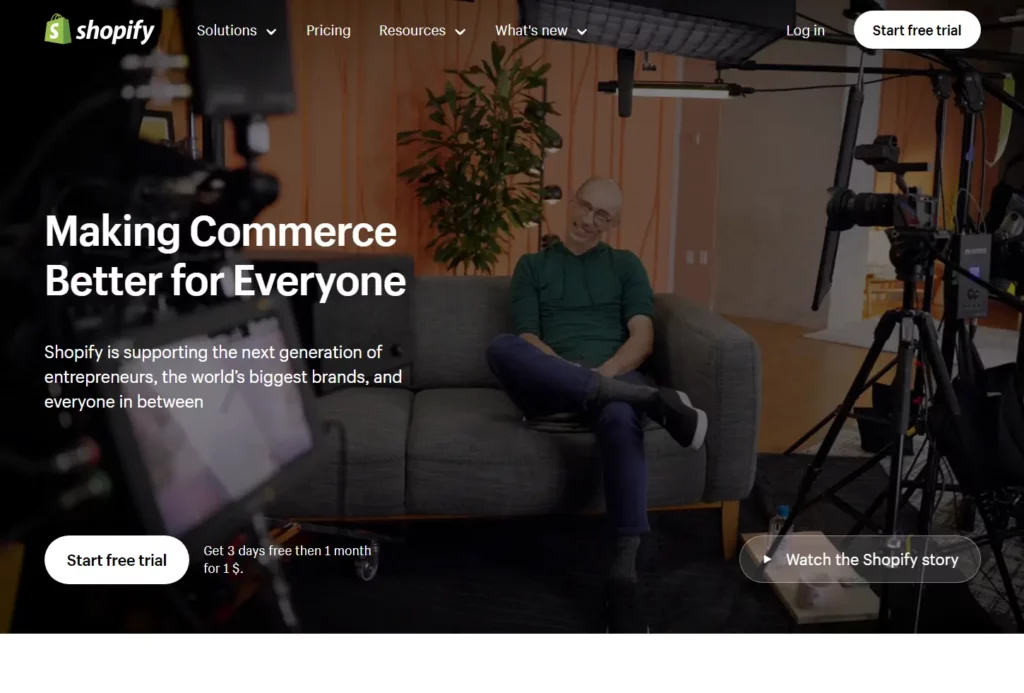
If you are planning to build an online store, then Shopify is the best option you can think of. It powers over 6.4 million websites worldwide and is famous for its powerful sales tools and simplicity.
Shopify has different pricing plans for its services with the basic plan starting at $29 per month. Some of the features include multichannel integration and customizable checkout which makes it suitable for all types of businesses.
Shopify also has a unique feature known as Shopify Magic which is an AI-based tool that assists in text generation, product descriptions, and email marketing to ensure that businesses come up with relevant content.
Shopify also gives its users access to more than 8000 apps. These apps enable users to extend the functionality of their sites, for instance, to sell products via social media or improve their site’s ranking on search engines.
Nevertheless, there are certain disadvantages of using Shopify. It is very much dependent on third party applications to enhance what is already provided by the application. Also, it can be costly, and there are only a few free templates that one can use.
However, these are the disadvantages of using Shopify to create an online store. Due to the fact that it has all the necessary tools and is easy to use, it is ideal for those who want to create their own website.
Conclusion
In conclusion, it is quite important to know how to create your own website with the help of a suitable website builder to enhance the potential of individuals and companies. With the help of the tools and resources that are available, it is possible to come up with a professional website even if one has no technical knowledge on the same. To get more specific information and statistics, please turn to the most recent reports from the industry bigwigs.

